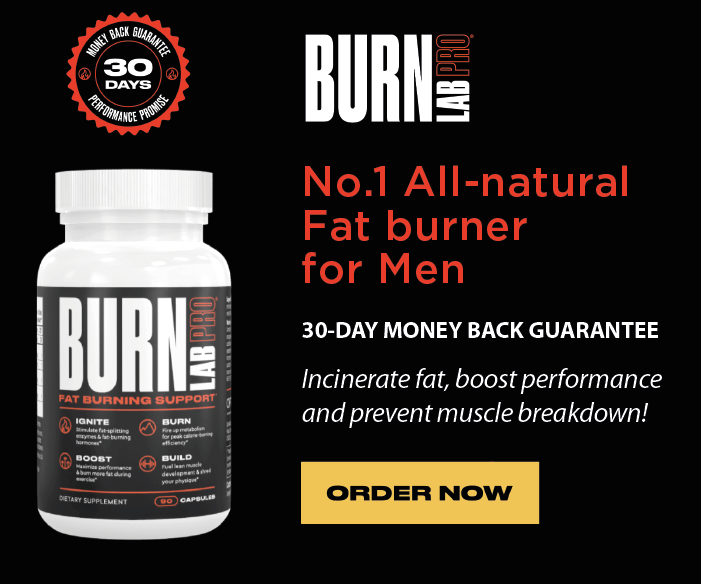Fasted vs Fed: Weight Training
Written by: Martin Ebner
Intermittent fasting has been one of the most popular weight loss methods for years now, and for good reason. Not only can it help promote weight loss, some studies suggest that it can also reduce inflammation, promote cellular regeneration, improve insulin sensitivity, and boost brain function. It's clear to see why people love it so much! Want to burn body fat for fuel when training? Fasting is a great choice for you. But what if you want to build muscle mass? Does fasting work for or against muscle growth? Some trainers say it helps, others trainers say it hurts, but what about the Science?
What's Your Goal?
The reason there is so much debate around whether you should work out while in a fed or fasted state is mainly because its efficacy depends on your goal. You might consider working out on an empty stomach for better performance, enhanced fat burning, or increase longevity. In each one of these scenarios, your fitness goals, genetics, body mass, preexisting health conditions, the type of workout, and the duration can all alter the effectiveness of fasted exercise for your body. In short, just because it hypothetically could help endurance athletes during training, it doesn't necessarily mean it's right for your body or fitness goals. But don't worry, we'll help you determine if it is.
Related: The best Stimulant-free Fat-burners for men and women 2021
Types of Fasted Workouts
Fasted Cardio
Let’s start with the most popular type of fasted training, Cardiovascular exercise. During a fasted state, starting anywhere from 6-12 hours after eating, our body's primary fuel source switches from glucose to glycogen and then to fat. Compare that to a "fed state" which causes insulin levels to rise and therefore use carbohydrates as our primary energy source. So it sounds like fasted workouts promote fat loss, right? Well, not exactly. In one study titled, “Body composition changes associated with fasted versus non-fasted aerobic exercise”, 20 young, active women were put on a daily 500-calorie deficit for four weeks. Half of the women performed a one-hour fasted cardio session three times per week and the other did one hour of cardio in a fed state. Fast forward four weeks and no fat loss differences were found between the two groups. The same was true of resistance training and high intensity (HIIT) training. Even though fat oxidation increases after fasted aerobic exercise, it doesn’t seem to have a big impact on overall body composition changes. It may even dampen your excess post-exercise oxygen consumption (EPOC), or the calories you burn post-workout due to an increase in metabolism. In the long run, doing fasted cardio for fat loss seems to be a bit of a bust but there is a silver lining!
Remember when I mentioned that there were many different things that affect the efficacy of your fasted training, not just food or the lack thereof pre-workout? For metabolically healthy individuals looking to maximize their fat burn, fasting might not be the best choice. However, for those with hypoglycemia, type 2 diabetes, or pre-diabetes, fasted exercise may improve blood sugar regulation, lessen their reliance on glucose as an energy substrate, and improve metabolic health to help alleviate these conditions.
Endurance athletes may benefit from fasted training as well. Though still theoretical at this point, long-term fasted cardio appears to lead to chronic molecular adaptations favoring fat oxidation, according to an article in Evidence-Based Athlete. This means that your body learns to use fat stores as another source of energy during endurance exercise when the others have been depleted. One study found that changes in skeletal muscle composition (more resting muscle glycogen concentration) were more evident in male rather than female endurance athletes. Does it mean that they'll burn more fat in the long run than if they had a meal before their workouts? No, but it may help them to power through the last leg of their race.
Related: Fasted Cardio: What is it, does it work and is it right for you?
Fasted Weight Training
Unlike cardio or aerobic exercise, weight training relies heavily on carbs for energy and due to its relatively low-intensity level, does not require oxygen. That means that the theory that if you deprive your body of glucose, it will dip into your fat stores for energy doesn't really hold up in the same way. Whether you're in a full or fasted state, bodybuilding and lifting heavy weights will use muscle glucose (glycogen stores) more than fat. In fact - bodybuilders beware - when you exercise too hard for too long in a fasted state, you can experience atrophy (muscle loss). This happens because your system pulls apart amino acids in order to help preserve blood glucose. Fueling up before a workout helps you perform for longer and lift more than when training on an empty stomach. Therefore when it comes to strength and muscular gains, nutrient timing (determining what to eat and when) can help you to get the most out of your weight training and see the best results.
What to Eat and When (macronutrient timing)
Finding the right time to eat can depend on a number of factors. You might find that eating an hour or so before your workout makes you feel nauseous and lethargic or you might start to feel a bit dizzy and fatigued if you haven't eaten in the hours prior to your workout. As a general rule, it's best to eat a well-considered meal 1-2 hours before and within the first hour after your workout. This will help you to avoid muscle loss, stimulate protein synthesis to build muscle mass, and speed up your recovery. Rather than trying to hit a certain amount of calories pre and post-workout, focus on your macronutrients - protein and carbohydrates. Before your workout, you should aim to consume a ratio of around 2:1 (carbs to protein - 50g carbs: 25g protein) and post-workout 2:1 - 3:1 (carbs to protein - 50-75g carbs: 25g protein). Limit fat pre and post-workout as it can slow down the absorption of the other macronutrients.
Pre-workout Foods
A banana and one cup of cottage cheese.
Protein smoothie made with plant-based milk, an easily digestible protein powder, banana, and berries.
If you’re looking for something calorie-free to give you a boost pre-workout that won’t affect a fasted state, you may want to consider taking a pre-workout formula such as Pre Lab Pro.
An omelet of one whole egg plus three egg whites and a piece of fruit
One cup chopped chicken breast with avocado, wrapped in a wheat tortilla
A cup of oatmeal topped with banana and sliced almonds
Eating within the first hour post-workout is critical for restoring nutrients to your body and allowing your muscles to repair and grow. Aim to eat a 3:1 ratio of carbs to protein.
Post-Workout Foods
Grilled chicken breast with roasted vegetables
Salmon with wild rice
Oatmeal with protein powder, banana, and almonds
Hummus with vegetables and pita
Toast with almond butter
Greek yogurt with berries and granola
Protein shake and banana
Conclusion
Fasting between workouts can be a great way to stay healthy and shed a few extra pounds. When it comes to weight training and building up muscle mass, however, you need to fuel your body rather than running on Empty! Supplements can be a great way to ensure optimal nutrition during workouts. Especially if you struggle to eat food before a workout.
More articles you might enjoy:
References
PubMed - Body composition changes associated with fasted versus non-fasted aerobic exercise.
Evidence-Based Athlete by Brandon Heavey - Does Fasted Cardio Enhance Fat loss.
Journal of science and medicine in Sport - Adaptations to skeletal muscle with endurance exercise training in the acutely fed versus overnight-fasted state.



